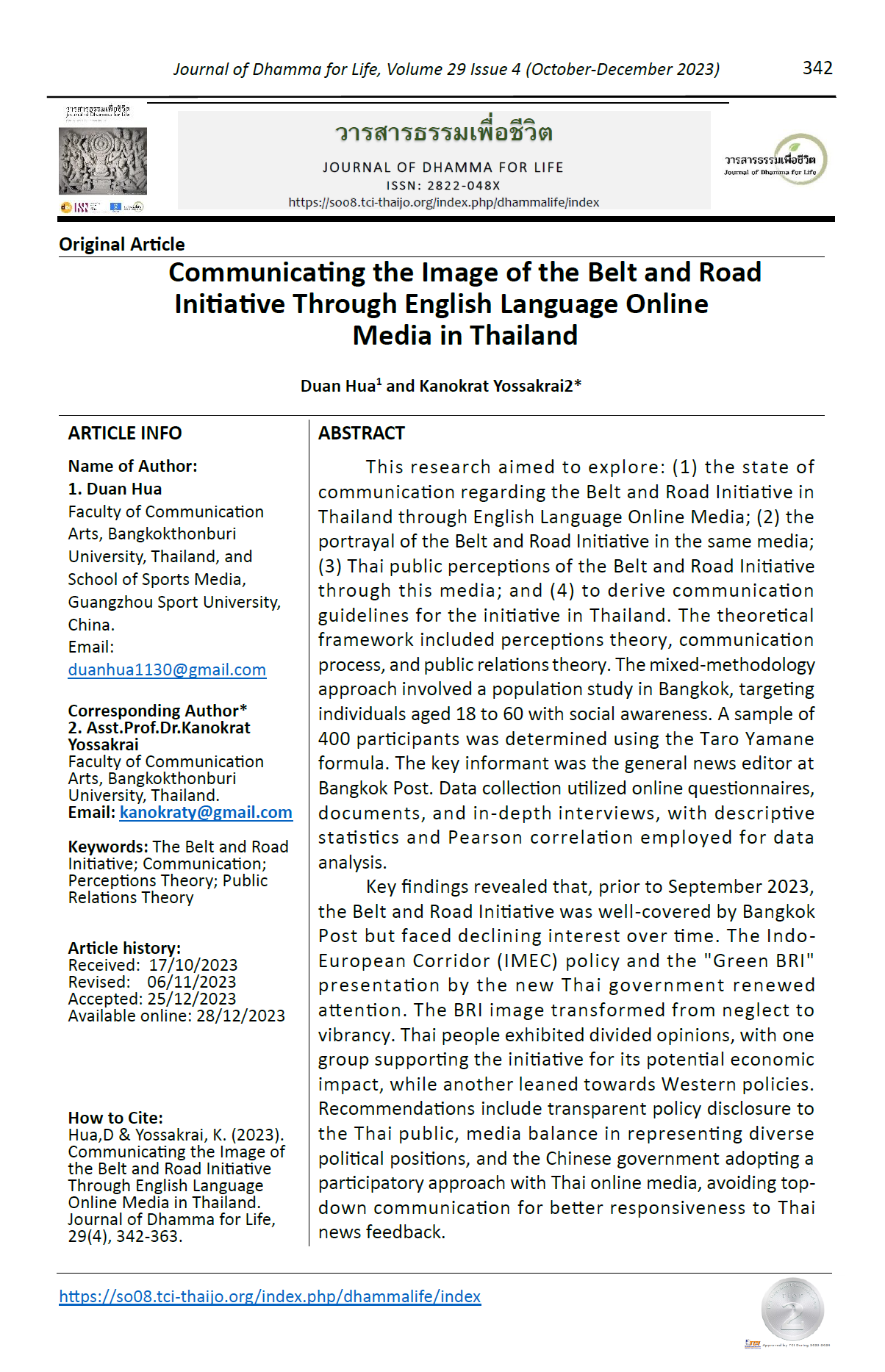Communicating the Image of the Belt and Road Initiative Through English Language Online Media in Thailand
Main Article Content
Abstract
This research aimed to explore: (1) the state of communication regarding the Belt and Road Initiative in Thailand through English Language Online Media; (2) the portrayal of the Belt and Road Initiative in the same media; (3) Thai public perceptions of the Belt and Road Initiative through this media; and (4) to derive communication guidelines for the initiative in Thailand. The theoretical framework included perceptions theory, communication process, and public relations theory. The mixed-methodology approach involved a population study in Bangkok, targeting individuals aged 18 to 60 with social awareness. A sample of 400 participants was determined using the Taro Yamane formula. The key informant was the general news editor at Bangkok Post. Data collection utilized online questionnaires, documents, and in-depth interviews, with descriptive statistics and Pearson correlation employed for data analysis.
Key findings revealed that, prior to September 2023, the Belt and Road Initiative was well-covered by Bangkok Post but faced declining interest over time. The Indo-European Corridor (IMEC) policy and the "Green BRI" presentation by the new Thai government renewed attention. The BRI image transformed from neglect to vibrancy. Thai people exhibited divided opinions, with one group supporting the initiative for its potential economic impact, while another leaned towards Western policies. Recommendations include transparent policy disclosure to the Thai public, media balance in representing diverse political positions, and the Chinese government adopting a participatory approach with Thai online media, avoiding top-down communication for better responsiveness to Thai news feedback.


